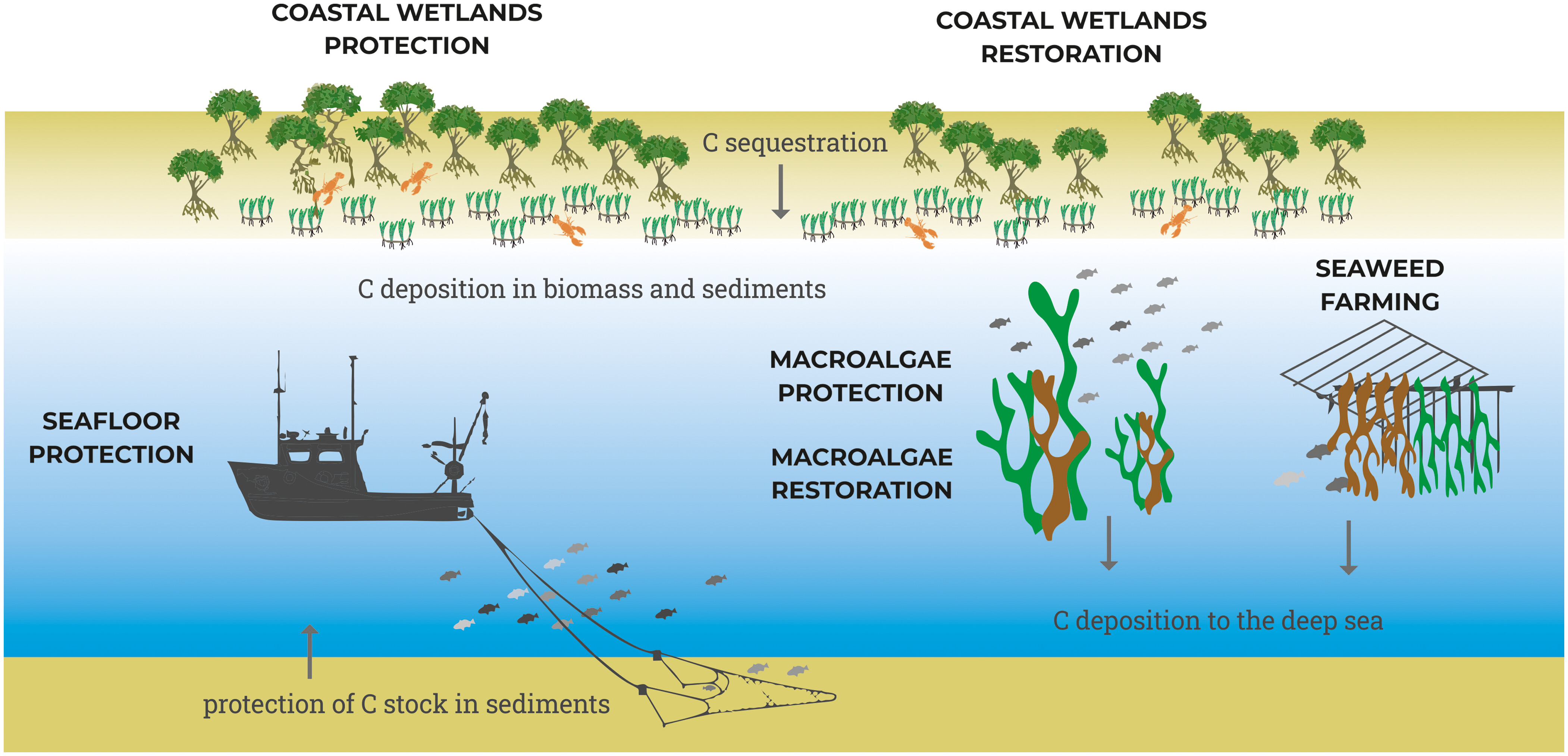Macroalgae Protection and Restoration
Macroalgae, including seaweeds, play a crucial role in carbon sequestration and marine ecosystem health. Protecting and restoring these marine plants can significantly contribute to climate change mitigation.

Expanding macroalgae to respond to climate change (The Proceedings of the National Academy of Sciences)
job openings
View open jobs in this Solution
Example Companies
- Sea6 Energy - Sea6 Energy is a platform that utilizes the unlimited potential of the oceans in a sustainable and ethical way.
- Ocean Rainforest - Cultivates seaweed for food, feed, and bio-based materials.
- GreenWave - Promotes regenerative ocean farming.
- Acadian Seaplants - Develops seaweed-based products for agriculture and food.
- Sea6 Energy - Focuses on large-scale seaweed cultivation for biofuel and bioproducts.
- Algaia - Produces seaweed extracts for various industries.
Overview
Macroalgae protection and restoration involve using fast-growing marine plants to store carbon and respond to climate change. These efforts can enhance marine biodiversity, support coastal communities, and contribute to global carbon sequestration.
Learn More
- Expanding macroalgae to respond to climate change - The Proceedings of the National Academy of Sciences
- Seaweed as a climate solution - Climatebase
Progress Made
Significant advancements have been made in macroalgae protection and restoration:
- Macroalgae Biofilters: Filters that remove CO2 and store it as biomass for renewable energy.
- Macroalgae Photobioreactors: Use sunlight to convert CO2 into oxygen, offsetting emissions.
- High-Impact Focus: Restoration efforts target areas with maximum climate change mitigation potential.
- Community Engagement: Local involvement is essential for successful restoration.
- Incentives: Financial and other incentives drive participation in restoration.
- Monitoring and Evaluation: Ongoing assessment ensures effectiveness and necessary adjustments.
Solutions by Sector
Coastal and Marine Ecosystems
- Marine Protected Areas (MPAs): Designating areas for macroalgae protection and restoration.
- Seaweed Farming: Cultivating seaweed for food, feed, and bio-based materials.
- Reef Restoration: Using macroalgae to restore damaged coral reefs and enhance biodiversity.
Case Studies:
- Ocean Rainforest, Faroe Islands: Cultivates seaweed for various applications, contributing to carbon sequestration (Ocean Rainforest).
- GreenWave, USA: Promotes regenerative ocean farming, integrating seaweed and shellfish cultivation (GreenWave).
- Acadian Seaplants, Canada: Develops seaweed-based products for agriculture and food industries (Acadian Seaplants).
Renewable Energy
- Biofuel Production: Using macroalgae biomass to produce biofuels.
- Biogas Generation: Converting seaweed into biogas through anaerobic digestion.
- Carbon Sequestration: Enhancing carbon storage through large-scale seaweed cultivation.
Case Studies:
- Sea6 Energy, India: Focuses on large-scale seaweed cultivation for biofuel and bioproducts (Sea6 Energy).
- Algaia, France: Produces seaweed extracts for various industries, contributing to carbon sequestration (Algaia).
- Pacific Bio, Australia: Converts seaweed into biogas and other renewable energy sources (Pacific Bio).
Food and Agriculture
- Seaweed-Based Fertilizers: Using seaweed extracts to enhance soil health and crop yields.
- Animal Feed: Incorporating seaweed into livestock feed to improve nutrition and reduce methane emissions.
- Human Nutrition: Developing seaweed-based food products for human consumption.
Case Studies:
- Mara Seaweed, UK: Produces seaweed-based food products for human consumption (Mara Seaweed).
- Cargill, USA: Develops seaweed-based animal feed to improve livestock nutrition (Cargill).
- Seakura, Israel: Cultivates organic seaweed for food and agricultural applications (Seakura).
Lessons Learned
- Scientific Knowledge: Understanding macroalgae's role in the carbon cycle is crucial.
- Data Collection: Gathering information on macroalgae distribution and abundance is essential.
- Community Involvement: Engaging local communities ensures successful restoration efforts.
- Incentives: Financial and other incentives drive participation in restoration projects.
- Monitoring and Evaluation: Continuous assessment ensures effectiveness and necessary adjustments.
Challenges Ahead
- Scientific Knowledge Gap: Lack of understanding of macroalgae's role in the carbon cycle.
- Data Limitations: Insufficient information on macroalgae distribution and abundance.
- Cultivation Challenges: Scaling macroalgae cultivation sustainably on land and water.
- Carbon Sink Use: Ensuring long-term carbon storage and preventing escape.
- Industry Partnerships: Collaboration with organizations like the Global Seaweed Industry Association (GSIA) to overcome challenges and promote sustainable macroalgae development.
Best Path Forward
- Research and Development: Increase investment for improved and affordable technology.
- Government Collaboration: Work with policymakers to raise awareness and create incentives.
- Industry Engagement: Partner with companies already using or interested in the technology.
- Community Involvement: Engage local communities in restoration efforts.
- Policy Support: Implement policies that promote macroalgae protection and restoration.
Image credit: The Proceedings of the National Academy of Sciences